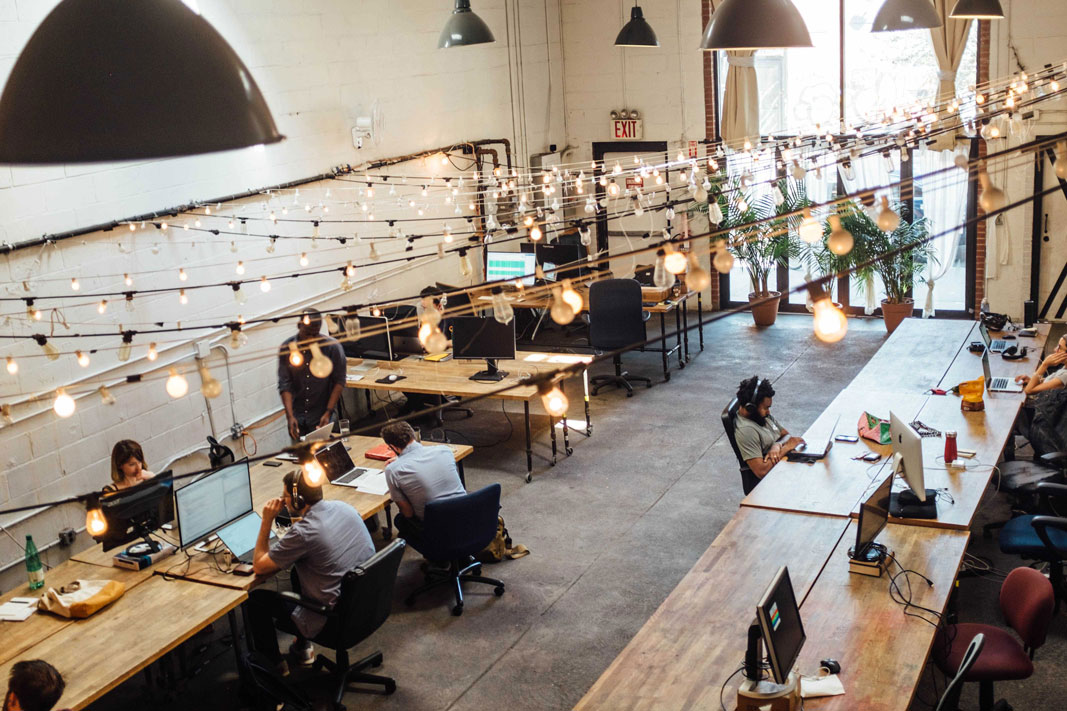Over the past several decades, open plan workspaces have become increasingly popular when it comes to office layouts. Describing a floor plan which emphasizes large, open spaces over small, enclosed rooms like private offices, open plan layouts are designed to foster greater levels of collaboration between colleagues.
There are other advantages, too, such as removing obvious hierarchies in offices, in which bosses and executives are locked away and unapproachable in their own offices, and therefore feel cut off from the rest of the team. Another benefit is the added flexibility, which can result in space-saving over comparable cubicle or office-based systems, and easier adoptions of concepts like “hot-desking.” Open plan offices can additionally deliver cost savings in the vicinity of 50 percent less per employee than traditional office layouts, along with a reduced carbon footprint.
But shifting from a “traditional” office to an open plan one isn’t always easy. Employees may actively resist the change, citing a number of challenges we associate with an open plan office layout. These might range from a lack of privacy, which can make it difficult to hold sensitive conversations or increased self-consciousness, to added distractions. There are other reasons an open plan office might not be popular. Different teams require different work environments. A software engineer may not want exactly the same work environment, in terms of noise level and collaboration, as a member of the marketing department.
Are these objections valid?
These objections aren’t always just about a fear of change. The reality is that both traditional and open plan office layouts can come with their own set of pluses and minuses. At best, open plan offices can offer some of the advantages we mentioned up top. At worst, they may actually have the opposite effect to the one you might expect. A 2018 study suggested that open plan offices significantly reduce face-to-face interaction (by approximately 70 percent); instead making employees “socially withdraw” from officemates and interact to instead predominantly using email or instant messaging services. Removing spatial boundaries in an office environment can also have a negative impact on employee productivity.
There are pros and there and cons, and every company has their own perspective on things. Keep in mind though, that if you are planning to shift from a traditional office plan to a more open one — for any reasons from better space management to hopefully improved collaboration — you want to go about it in the right way. After all, if you’re looking to promote a literal sense that everyone is working together more closely than ever, it’s probably in your best interests to ensure that your employees are starting from a position of, frankly, wanting to be in the same room as you.
Making the right moves
In all likelihood, you want to start this process from the very beginning, by articulating your vision and rationale for the change to the people who work for you. Soliciting opinions from employees and colleagues not only makes others feel listened to, but can provide you with some quick (and free!) market research on what has and hasn’t worked in other open plan workplaces they have experienced.
When it comes to the design itself, it’s important to address some of the criticisms people might have of open-plan environments. Rather than moving desks as close as possible, like a classroom setup, think of different ways to arrange desks to take advantage of the space — perhaps by finding innovative ways to capitalize on features like natural light.
Another positive move may involve having private breakout rooms or soundproof “phone booth” style pods interspersed amongst the desks. This approach can break up the open plan room, without negatively affecting its positive qualities, while giving employees private spaces to conduct sensitive conversations.
An even bolder idea might seek to truly take advantage of the more flexible workspace by having everything from desks to tea and coffee stations on easily movable casters that will allow you to reconfigure the room as and when required. That could be because certain teams have to work together for projects, because introvert or extrovert employees work better with greater or less separation, or simply to stop the team getting bored with the current layout.
Choose an appropriate software for the job
To make this kind of change requires the right tools for the job. POC’s Seating Allocation System is a bespoke seating solution that allows you to carry out seating simulations to test out different office configurations. Using the Seating Allocation System, you can easily experiment with dividing, parceling and uniting workspaces to adapt to today’s changing workspace requirements and realities.
The software lets you locate empty or underutilized space, allocate room to different departments and divisions, move employees from one workstation to another (“drag and drop”) and even explore moving around furniture and other objects. All of this is done without the need of AutoCAD or prior technical knowledge, and makes it easier than ever to carry out continuous, “on-the-fly” changes. It’s a cost-effective solution that will enable you to make the most of your workspace — however you choose to arrange it.
